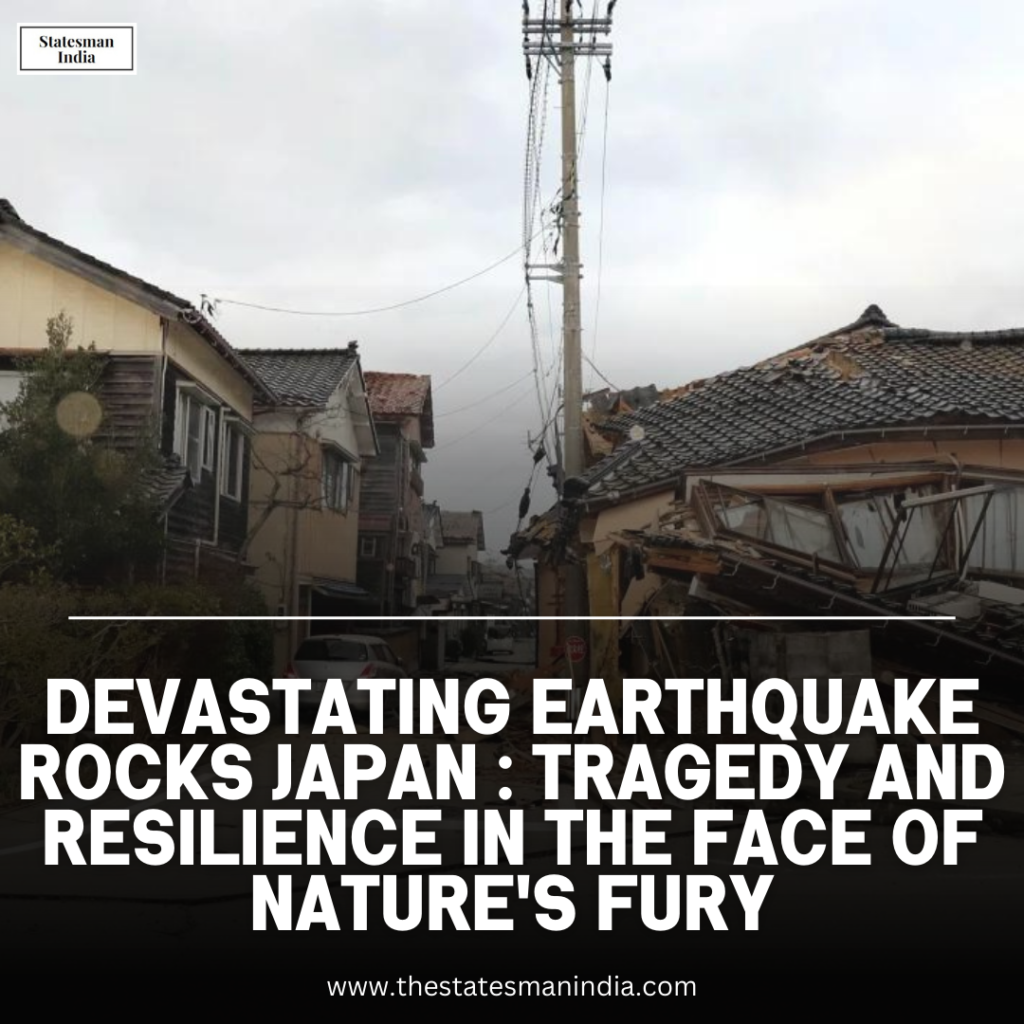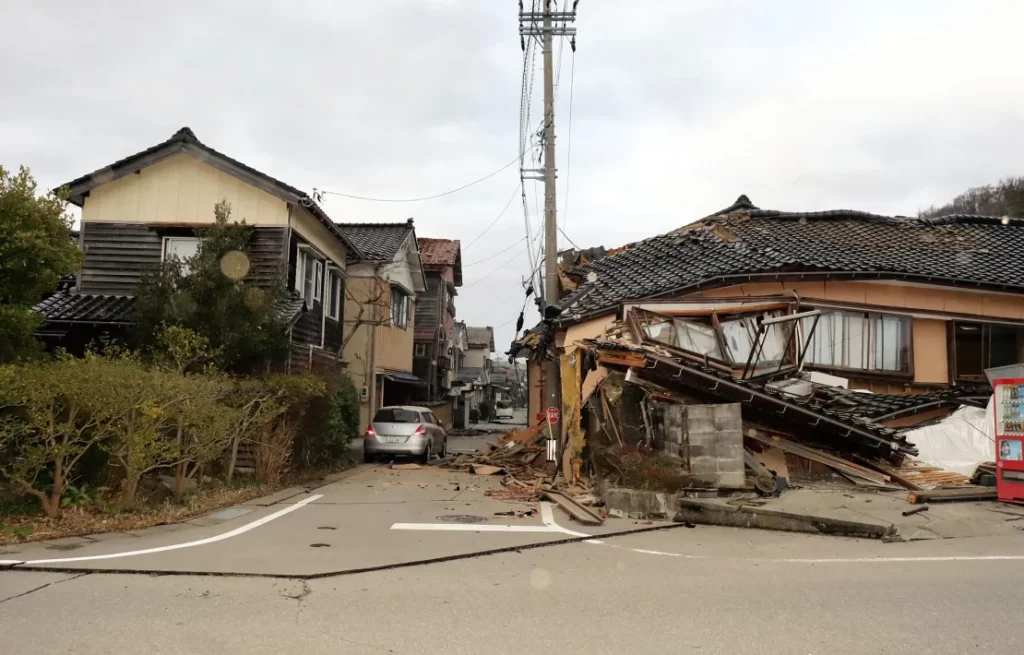Devastating Earthquake Rocks Japan: Tragedy and Resilience in the Face of Nature’s Fury

A powerful earthquake with a magnitude of 7.6 struck Japan’s Noto Peninsula in the Sea of Japan on January 1, 2024, leaving a trail of destruction and despair. The temblor, the strongest to hit the country since the 2011 Tohoku earthquake, triggered widespread damage, casualties, and tsunami warnings across the region.
Impacts of the Earthquake:
- Widespread Damage: Buildings collapsed, roads cracked, and fires erupted across Ishikawa Prefecture, the epicenter of the quake. The iconic Wajima lacquerware district in Wajima city suffered significant damage, with traditional wooden buildings facing major restoration challenges.
- Loss of Life and Injuries: At least 6 people were confirmed dead and dozens injured, with rescue efforts ongoing to search for potential survivors trapped under debris.
- Tsunami Warnings: The quake triggered tsunami warnings for coastal areas along the Sea of Japan, with waves as high as 1.2 meters initially reported. Thankfully, the waves did not cause significant damage, and the warnings were lifted after some time.
- Power Outages and Disruptions: Widespread power outages plunged thousands of homes into darkness, disrupting communication and basic necessities. Transportation infrastructure also faced disruptions, with damaged roads and railways impacting travel.

Government Response and Rescue Efforts:
- Chief Minister Fumio Kishida: Prime Minister Kishida immediately established an emergency response headquarters and pledged full support for rescue and recovery efforts. He expressed his condolences to the victims and urged citizens to remain calm and follow instructions from local authorities.
- Deployment of Emergency Services: The Japanese Self-Defense Forces were deployed to assist with search and rescue operations, including clearing debris and providing medical aid. Firefighters battled blazes triggered by the quake, while emergency responders ensured the transportation of injured individuals to hospitals.
- Evacuation Measures: Residents in coastal areas were evacuated to higher ground following the tsunami warnings, highlighting the effectiveness of Japan’s well-rehearsed disaster preparedness procedures.
| Earthquake | Date | Magnitude | Epicenter | Deaths | Injuries |
|---|---|---|---|---|---|
| 2024 Noto Peninsula Earthquake | January 1, 2024 | 7.6 | Sea of Japan | 6 | Dozens |
| 2011 Tohoku Earthquake | March 11, 2011 | 9.0 | Offshore Tohoku region | 15,899 | 5,657 |
| 2016 Kumamoto Earthquakes | April 14-16, 2016 | 7.0 & 6.7 | Kumamoto Prefecture | 267 | 1,146 |
| 2023 Osaka Earthquake | June 18, 2023 | 6.1 | Offshore Osaka Prefecture | 4 | 333 |

Resilience and Recovery:
- Community Spirit: Amidst the devastation, the spirit of Japanese resilience shone through. Local communities rallied together, aiding rescue efforts and offering support to those affected. Volunteers prepared meals and provided temporary shelter for displaced residents.
- Reconstruction Efforts: The Japanese government pledged long-term reconstruction efforts, committing financial resources and expertise to rebuild damaged infrastructure and revitalize affected areas. Lessons learned from past disasters will be applied to ensure a swift and effective recovery process.
The earthquake in Japan serves as a stark reminder of the vulnerability of human communities to the power of nature. However, it also showcases the remarkable capacity of Japan and its people to respond to such challenges with unity, resilience, and unwavering dedication to rebuilding a brighter future.
Read More:
Dawn of Cosmic Discovery: ISRO’s XPoSat Mission Blasts Off to Probe Black Holes and Beyond
Odisha Sighs Relief as Cyclone Sitrang Weakens, Light Rain Forecast for Coastal Areas
Kerala on Alert as JN.1 Omicron Sub-Variant Edges Higher: A Closer Look
A Drone’s Shadow Falls on Gujarat: Ship with 20 Indians Targeted in Suspicious Attack


